 
|
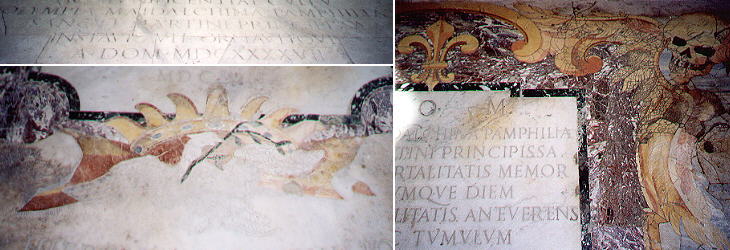 | ||
S. Martino had new walls and two new baroque gates. The main one has a long inscription which
details the improvements made by the pope. Both gates lead to large new squares: the pope and the princess
had been involved in the redesign of Piazza Navona in Rome
and they invited some of the same architects (including Francesco Borromini) who had worked there to help in the renovation of S. Martino.
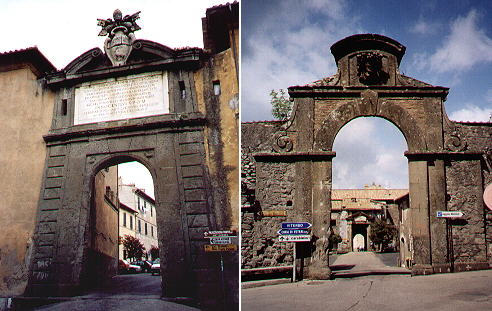 | ||
The only monument left of medieval S. Martino is the imposing Cistercian cathedral built at the beginning of the XIIIth century. The two bell towers were added by Borromini and also the coat of arms was designed by him: it is a replica of Urbanus VIII's coat of arms in Palazzo Barberini.
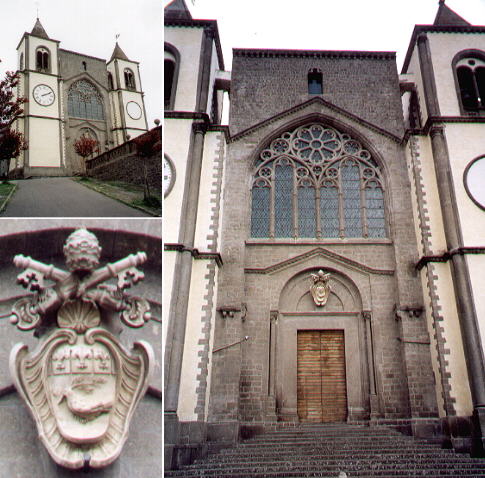 | ||
Innocentius X is known for having set strict limits to the changes Borromini wanted to make in St John Lateran: he took the same line with respect to this cathedral, which retained its medieval atmosphere.
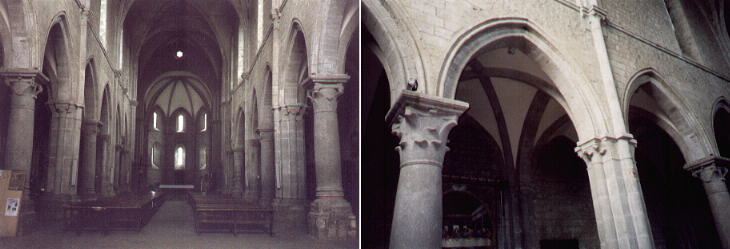 | ||
Olimpia built her palace next to the cathedral with a direct access to it. The access to the upper floors of the palace is facilitated by a cordonata, a ramp with very short steps. Its design recalls the steps of Palazzo Barberini.
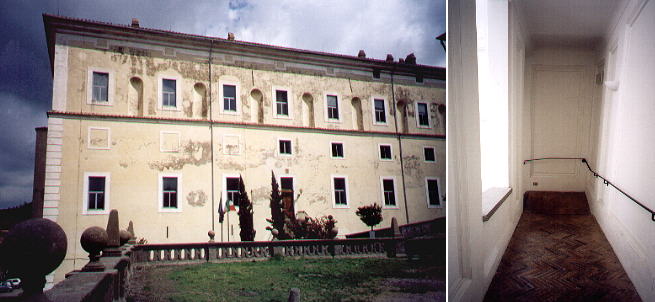 | ||
Palazzo Pamphili
The renovation of S. Martino covered also the ordinary houses. They were built following the same pattern and they were numbered. They constitute a very interesting example of early urban development planning.
 | ||
The walls of S. Martino were not meant for defense against an army, but just as a security measure against bands of robbers. For this reason they were used as part of the houses. The house built on the back of the main gate has a window which is an excellent spot for seeing what goes on in S. Martino.
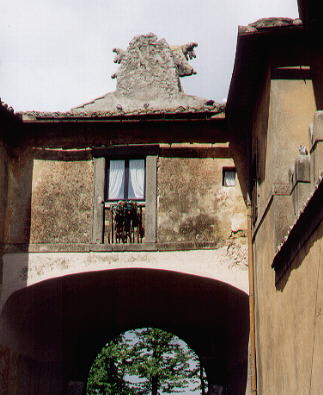 | ||
In and about Viterbo - other pages:
Viterbo
Bagnaia
Bagnoregio
Bomarzo
Orte and Vasanello
S. Maria della Querce
Tuscania
Vitorchiano
Walks with Ferdinand Gregorovius in the Roman countryside
some other walks:
A walk to Porta Furba
Via Appia Antica from Cecilia Metella to Torre in Selci
Via Appia Antica from Torre in Selci to Frattocchie
See my Home Page on Baroque Rome or my Home Page on Rome in the footsteps of an XVIIIth century traveller
All images © 1999 - 2003 by Roberto Piperno. Write to romapip@quipo.it
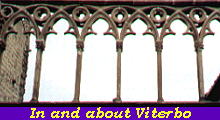 S. Martino al Cimino
S. Martino al Cimino